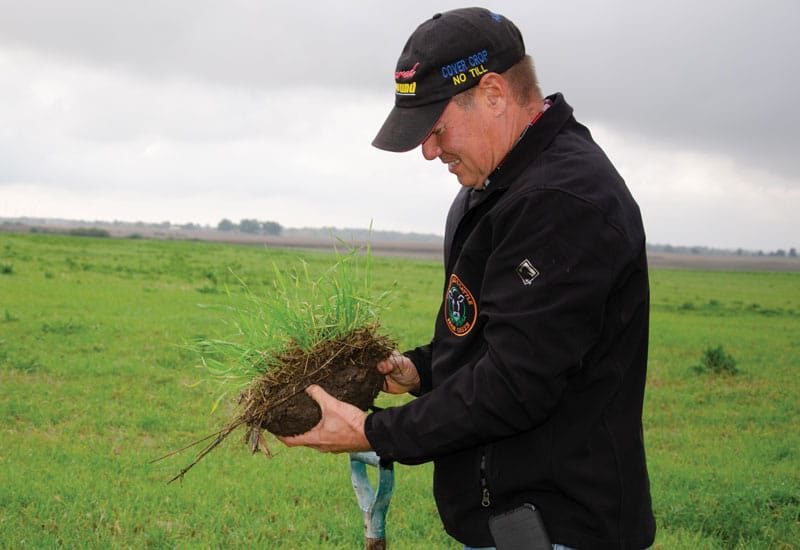No-Till Farmer
Get full access NOW to the most comprehensive, powerful and easy-to-use online resource for no-tillage practices. Just one good idea will pay for your subscription hundreds of times over.

GROWING N. Rick Clark examines a clump of soil near his Williamsport, Ind., farm. He uses cover crops for nitrogen, rather than manufactured sources.
Rick Clark wants growers to spend less on synthetic inputs.
He also wants to eliminate herbicides, open up the window for planting, and more. That all starts with eliminating tillage, Clark says.
“Tillage has to stop,” he says. “Tillage is so damaging to the soil profile. We work hard to build soil health to build the microbial community. When you bring a piece of tillage equipment through that microbial community, you destroy that community and it now cannot function at peak performance.
“We need the arbuscular mycorrhizal fungi, which are the communications backbone of the network, and we need the network working because there will (not) be new transactions without that fungi.”
The Indiana no-tiller has turned away from manufactured nutrients. Instead, he grows his own nitrogen in the form of cover crops. At the 2022 National No-Tillage Conference, he outlined his strategy for replacing inputs and touched on his broader ideas about soil stewardship.
His first step was introducing cold-tolerant peas, which widen the growing season window into cooler months at either end.

COVER CROP VALUE. This chart, taken from Rick Clark’s 2022 National No-Tillage Conference presentation, shows the dollar values recovered from using cereal rye as a source of nitrogen, phosphorus and potassium.
Cover crops, done right, can furnish nitrogen (N), phosphorous (P) and potassium (K) in abundance, and Clark has the figures to back this up.
To find out how much of each cover crops provide on your operation, he recommends measuring them using a…